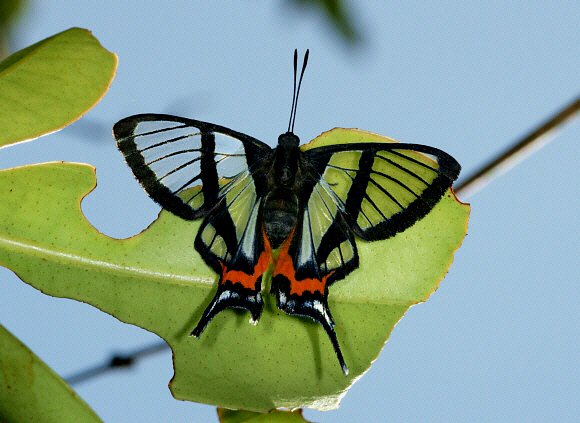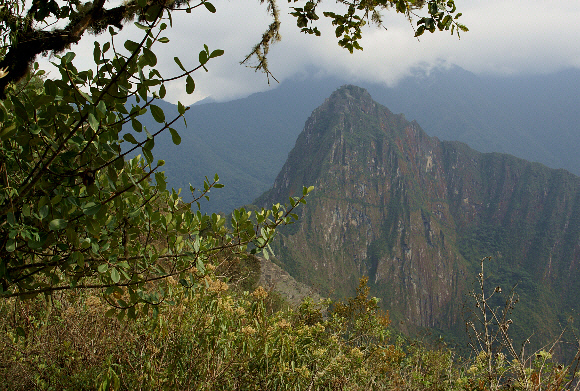 Chorinea sylphina, Machu Picchu, Peru – Adrian Hoskins
Chorinea sylphina, Machu Picchu, Peru – Adrian Hoskins
Introduction
When seen in flight the transparent wings of this exquisite butterfly reflect a myriad of shimmering iridescent green, blue and pink hues that hold the observer spellbound. As it flutters rapidly around bushes and shrubs it could easily be mistaken for a damselfly, and it is not until it settles under a leaf and stops fluttering that it reveals its true identity.
The butterflies are rarely encountered. They fly in full sunshine but periodically rest beneath leaves. The insect shown above settled under a leaf at the edge of the Sun Gate trail at Machu Picchu. In places like this, where there is a sheer drop of a thousand metres next to the trail, and just a few flimsy bushes to break your fall if you slip, photography can be a little risky! Luckily this particular insect landed in a position where there was a ledge immediately below, and photography was safe.
The genus Chorinea comprises of 8 species, all following the same basic wing pattern as sylphina, but varying in the configuration and extent of the red markings on their hindwings.Chorinea sylphina is found in Ecuador, also formed within a leaf shelter..
Habitats
This is a cloudforest species found at altitudes between about 2000-3000m.
 Chorinea sylphina habitat – cloudforest, altitude 2700m, Machu Picchu, Peru – Adrian Hoskins
Chorinea sylphina habitat – cloudforest, altitude 2700m, Machu Picchu, Peru – Adrian Hoskins
Lifecycle
The eggs are pinkish and finely sculptured. They are laid in neat batches of up to about 160, on the underside of leaves of the foodplants which include Prionostemma ( Hippocrataceae ) and Maytenus ( Celastraceae ). The newly emerged larvae feed gregariously, nibbling at the cuticle on the upper surface of the leaves. After the 3rd instar they feed solitarily, each larva living within it’s own leaf shelter. The pupa is also formed within a leaf shelter.
Adult behaviour
The butterflies spend most of their time in the canopy, but have been observed to congregate in groups of 5-12 on the underside of leaves at a height of about 5m. At ground level they are almost always seen singly. They fly in full sunshine, and can occasionally be found mud-puddling at the edge of streams. If molested the butterflies exude a yellow fluid from a gland on the thorax.
